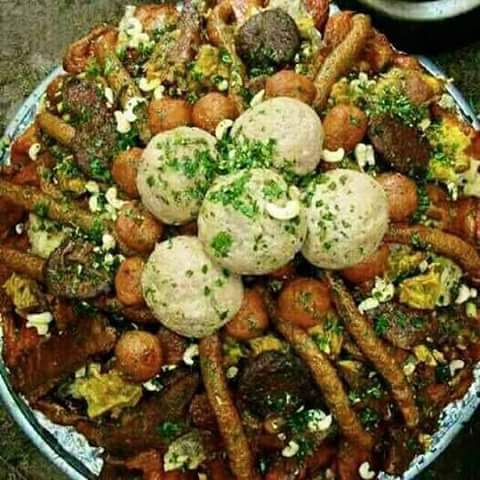WAZWAN: HEART AND SOUL OF KASHMIR
Kashmir is known as the land of heaven. Nature gives more peace and positive energy to oneself. Kashmir is not an inspiration only for art and culture, beauty, music, poetry but is also famous for its cuisine. Just like its picturesque beauty, the food in Kashmir is heavenly. Kashmiri dishes are the blend of three different styles: Kashmiri pandits, Mughals, and Muslims. Kashmir paradise; a nature lover’s wonderland is also famous for the traditional dish called Wazwan.
The history of Kashmiri’s traditional cuisine Wazwan dates back to the last year of the 14th century when Mughal ruler Timor invaded India in 1348, during the region of Nasiruddin Muhammad of the Tughlaq Dynasty. Wazwan, the dish migrated with Weavers, Woodcarvers, Architects, Calligraphies and cook from Samarkand to Kashmir Valley. Wazwan is highly influenced by the Iranians Afghan and Central Asia Styles of cooking. Kashmir Cuisine is a gourmet popularly known as Wazwan.
Wazwan: The most popular dish among the Kashmiri people. It consists of mostly meat-based dishes. The word “waz” means chef and word “wan” denotes an array of meat. It includes curries and other elaborate dishes. Wazwan consists of 36 dishes with about 15-34 dishes popularly known as ‘feast fit for kings’. It is a multi- course meal. This dish is considered as a symbol of pride in Kashmir culture and identity. Lamb or chicken are most commonly used in the preparation of Wazwan. It is also served internationally at Kashmir food festivals and reunions.
The ultimate formal banquet in Kashmir is the royal Wazwan, of its thirty-six courses. Fifteen and thirty dishes cooked overnight under the supervision of master chef called a vastewaze. There is a proper custom of having this meal. All the people are requested to sit in a group of four and share the meal in a large copper platter called the traem. It is covered with sarposh. People remember Allah before the meal. After or before the meal they have a custom of washing hand in a basin called the trash-t-naer, which is taken around by the attendants. Wazwan is cooked in nickel-plated copper vessels. Vessels are probably made from fruit trees. When the lid of tarami is removed there is an aroma of different dishes that make your stomach hungry. Wazwan consists of a heap of rice and the first few courses include:
Seekh kebabs: Trammi is quartered by 2 long seekh kebabs. It is divided into two halves and then served. The dish consists of roasted meat over a hot coal. Someone preferably eldest in tarami divides kebabs into four parts equally.
Tabak-maaz: It is a meat made up of lamb ribs which is cooked twice. First meat is covered with a paste of yogurt including spices. It is then fried deeply and served in a dry form.
Daeni phoul: It is a large piece of mutton.
Waze kokur or waza chicken: Chicken is cooked and then garnished with coriander and melon seeds.
Kashmiri methi: It is made up of lamb stomach. It is flavoured with methi or fenugreek. There is 4 small division of methi.
Rista: It is red colored Kashmiri meat balls mixed with gravy. Four ristas are served to each trammi.
Rogan josh or red lamb: Rogan means oil or fat and josh means “intense heat”. It is made in oil at intense heat. Tender lamb is cooked with Kashmiri spices. Mawal or cockscomb was used for flavouring purpose.
Daniwal karma: The word dhaniwal refers to coriander in the Kashmiri language. It is a mutton korma. It is cooked in a lot of coriander or dhaniya and yogurt based gravy.
Aab gosh: It is sheeps ribs cooked in milk based gravy. It is flavoured with green cardamoms and saffron.
Ghustabaa: It is the finishing dish served in Wazwan. Before taking this dish people prefer to have fresh rice. Mutton balls are cooked in curd and spices. It is made up of mutton and lamb fat together.
Just say the word Wazwan in Kashmiri home and there is not a single person who would not say ‘aab ounthe Mei, bathe taraem wathiha’. Wazwan is a heart dish of Kashmir valley.
TARUNA AGGARWAL.



